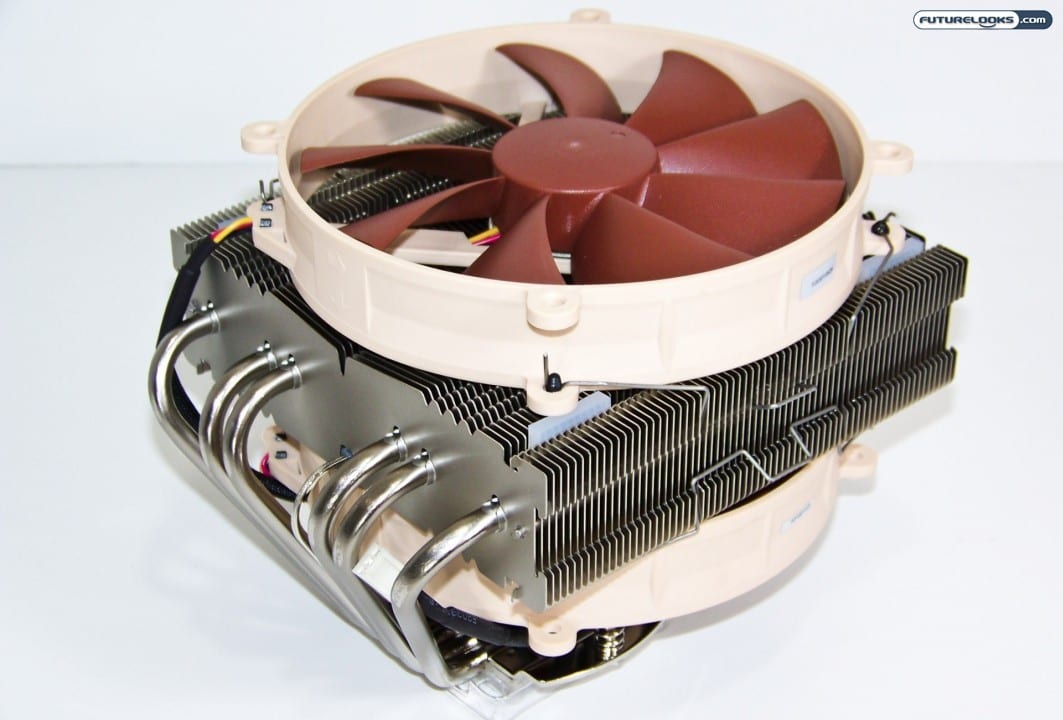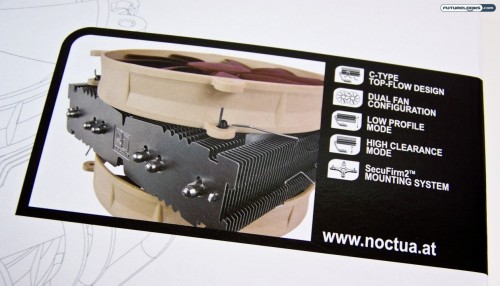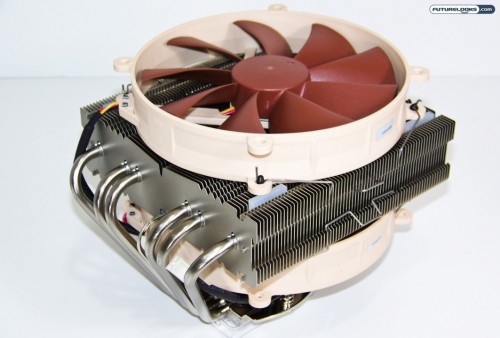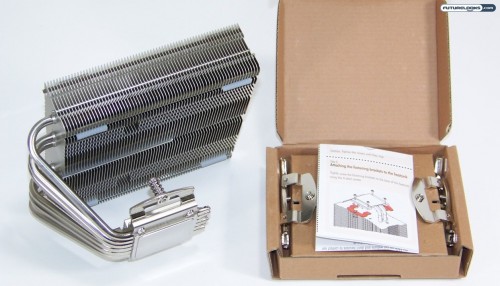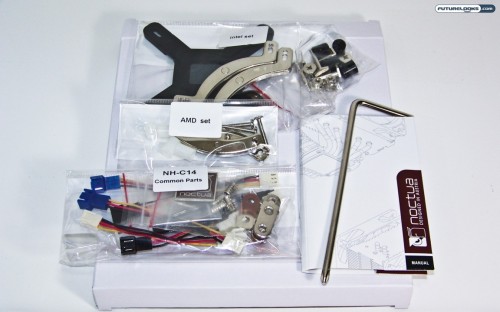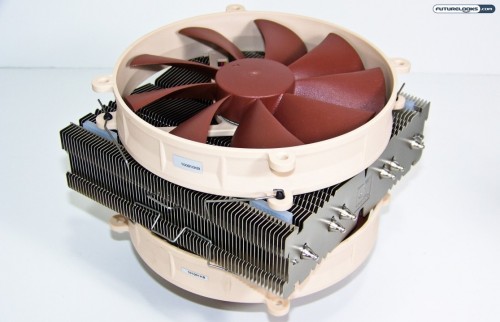A good CPU cooler is very important on hot summer days. Especially if you’re overclocking a high end multi-core processor. If cool air isn’t getting to your CPU, motherboard, or surrounding components, heat can quickly compromise your system’s stability. If you’re stuck in a chassis that just can’t quite direct that air to the right places, we think the Noctua NH-C14 CPU cooler could be a solution. Let’s check it out!
Features and Specifications
The unique horizontal design of the Noctua NH-C14 that makes it useful when cooling more than just your CPU. A couple of 140mm (NF-P14) cooling fans aimed downwards can suddenly push much needed air on to the motherboard, memory, and in some cases the back of a video card. The fans can be configured individually using the BIOS or with a Low-Noise or Ultra-Low-Noise adapter that sets fan speed to a pre-determined RPM.
In case you’re wondering about the rated fan speeds and noise, the fans in stock configuration rotate at 1200 RPM moving 65 feet of air producing a measly 19-20 dB(A). The Low-Noise Adapter limits rotation at 900RPM moving 47 feet of air at 13 dB(A). And, the Ultra-Low-Noise Adapter limits rotation to 750 RPM moving 42 meters of air at 10 dB(A). Basically, it goes from quiet to producing less noise than your own breathing!
Finally, the $89.99 price tag of the NH-C14 gets you more than just a 6 year warranty. In our Computex 2011 Video with Noctua, we learned that they provide lifetime cooler support with updated mounting kits free of charge with proof of purchase. Provide a valid receipt and you can move your cooler over to your new system down the road. How cool is that?
What’s in the Box?
Noctua has never skimped on the quality of components and materials used inside any of their products. That high standard continues in the accessories bundled with the NH-C14 cooler.
Inside the box for the NH-C14 Cooler you will get…
- Two NF-P14 (140mm) Fans (Ratings above)
- Two pairs of fan wires for mounting
- A Low-Noise Adapter (L.N.A.) wire splitter
- An Ultra-Low-Noise Adapter (U.L.N.A.) wire splitter
- NT-H1 Thermal Compound (It’s good stuff)
- SecuFirm2 Mounting Kits for all of the AMD and Intel CPU
- Noctua metal case badge (Show that you’re cool)
- L-Shape Screwdriver
There is literally nothing you need extra to install the NH-C14. They have even included a special screwdriver that makes life very easy when installing it.
Despite the cooler’s 850/1000 gram total weight with fans mounted, Noctua still warranties the NH-C14 for a total of 6 years. As mentioned earlier, Noctua also provides adapter kits for processors that show up even a couple years after launch for FREE. That means that when LGA2011 rolls out, you can get them to ship you one with proof of purchase. Worth considering when pricing out coolers, especially since the Noctua is typically no more than $5 – 10 more at the top end.
Let’s move on to a quick inspection of the cooler itself, then roll on to installation.
Taking a Closer Look
The NH-C14 takes up about as much space floor space as the massive NH-D14, but with a single horizontal radiator. The two 140mm fans span the width of the cooler almost entirely. The cooler stands about 5.5″ tall with all the fans installed. That means it’s quite a bit shorter than man tower coolers. We found that it just fit inside our Silverstone SG07 mini-ITX case. However, the width easily fills the SG07 to capacity. For ITX, it leaves very little room and may quickly encroach on your video card depending on the orientation of the CPU socket. Otherwise, it fits all other form factors just fine.
The heat pipes on the NH-C14 are what cool the CPU the most. There are six C-shaped heat pipes roughly 6mm in diameter that carry the heat up and away from the CPU. As long as the liquid within the pipes is of good quality, heat can quickly be carried away. This is also an area where Noctua hasn’t skimped out on.
Regular small, mid, and full sized towers should have no problem accommodating the massive Noctua NH-C14. Again, it will depend on the design of your particular case. If you have space open above your motherboard, you should have enough room. Users with mini-ITX cases should be aware that this may or may not fit and it’s best to measure twice and buy once.

